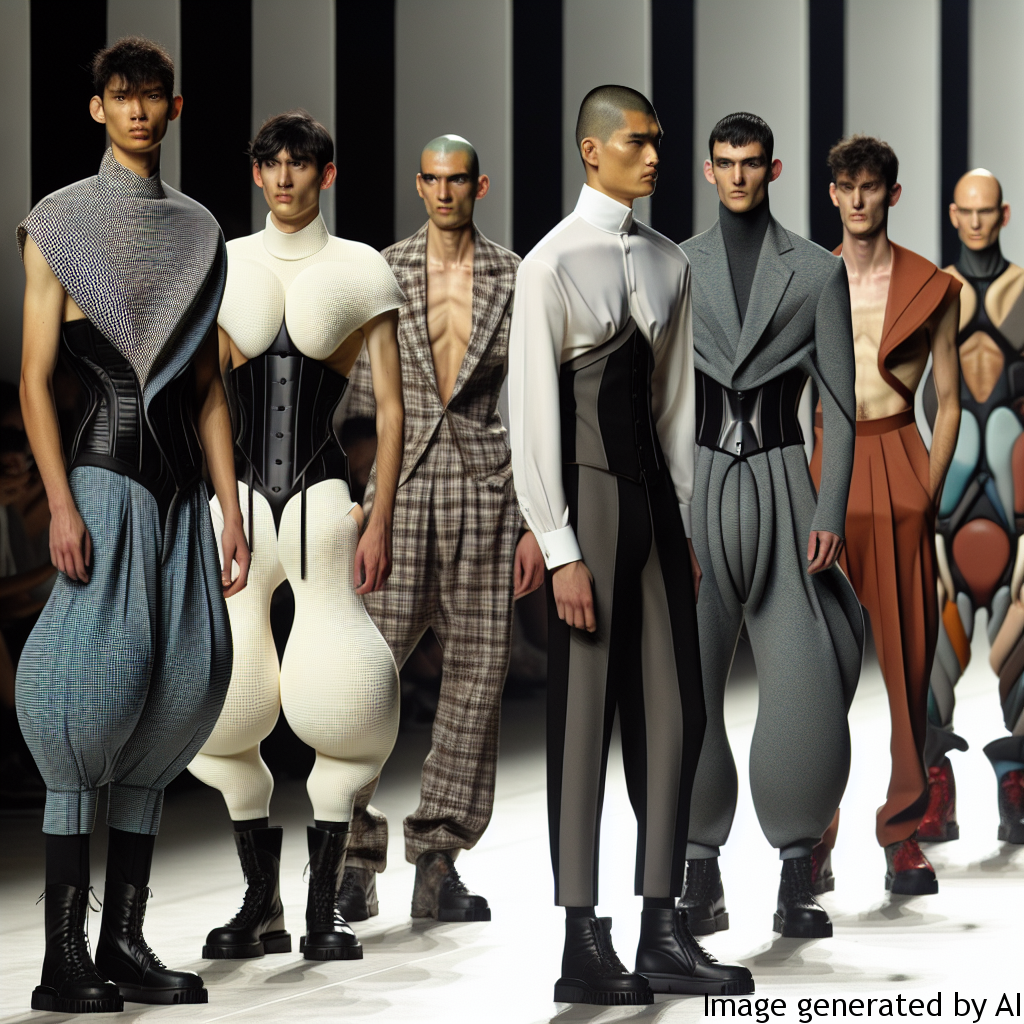Introduction
As society becomes more aware of gender diversity, so too does the fashion industry. The traditional model of sharp suits and rugged utility for men has been under constant challenge and evolution. Designers and style icons are pushing the boundaries of men’s fashion evaluating traditional men’s form and silhouette. This change doesn’t only reflect aesthetic flexibility but can also be a way to challenge, explore, and alter gender roles within society. Let’s dig deeper into how fashion deconstructs the expectations of masculinity and its psychosocial impacts.
Gender Expectations and Their Impact on Men’s Mental Health
The Stereotypical Men’s Roles
Traditionally, men are expected to be strong, independent, and unemotional – the so-called “toxic masculinity”. These expectations can be seen in dress codes where men were supposed to wear primarily dark, “masculine” colours and adhere to strict suit-and-tie formats. Clothing was a physical manifestation and reinforcement of these norms.
The Psychological Impact
The issue arises when these confining norms begin to affect men’s psychological well-being. Men may feel pressure to conform to these expectations, mistaking them for the true boundaries of masculinity. The lack of freedom in self-expression and the constant reinforcement of traditional norms can lead to anxiety, depression, and other mental health issues.
Examples of How Gender Roles Can Impact Men’s Lives
In everyday life, these restrictive norms can manifest in various ways. For instance, a man might feel uncomfortable wearing bright colours or expressive clothing in fear of judgment or comments about their masculinity. In the corporate world, deviating from the standard suit can be seen as unprofessional, adding another layer of enforcement. This can lead to reduced self-esteem, unfulfilled potential, and suppression of true personality.
Tips to Improve Mental Health Considering Gender Roles
Breaking away from traditional norms is a personal journey but it can have societal impact. For starters, embracing self-expression through clothing, regardless of societal expectations can be empowering. Moreover, dialogue about these issues is important. Spaces that allow for discussion and normalisation of diverse forms of masculinity can greatly reduce the stress of conforming. Seeking professional help is also advisable if one struggles with mental health issues that arises from these gendered expectations.
Conclusion
As society evolves and becomes more accepting, men are given more room to explore different forms of masculinity through fashion, and by doing so, break down harmful gender norms. The effects of these changes not only push the boundaries of fashion but also align the industry with the move towards a more inclusive society. These are significant strides towards better mental health and a more diverse understanding of masculinity.

